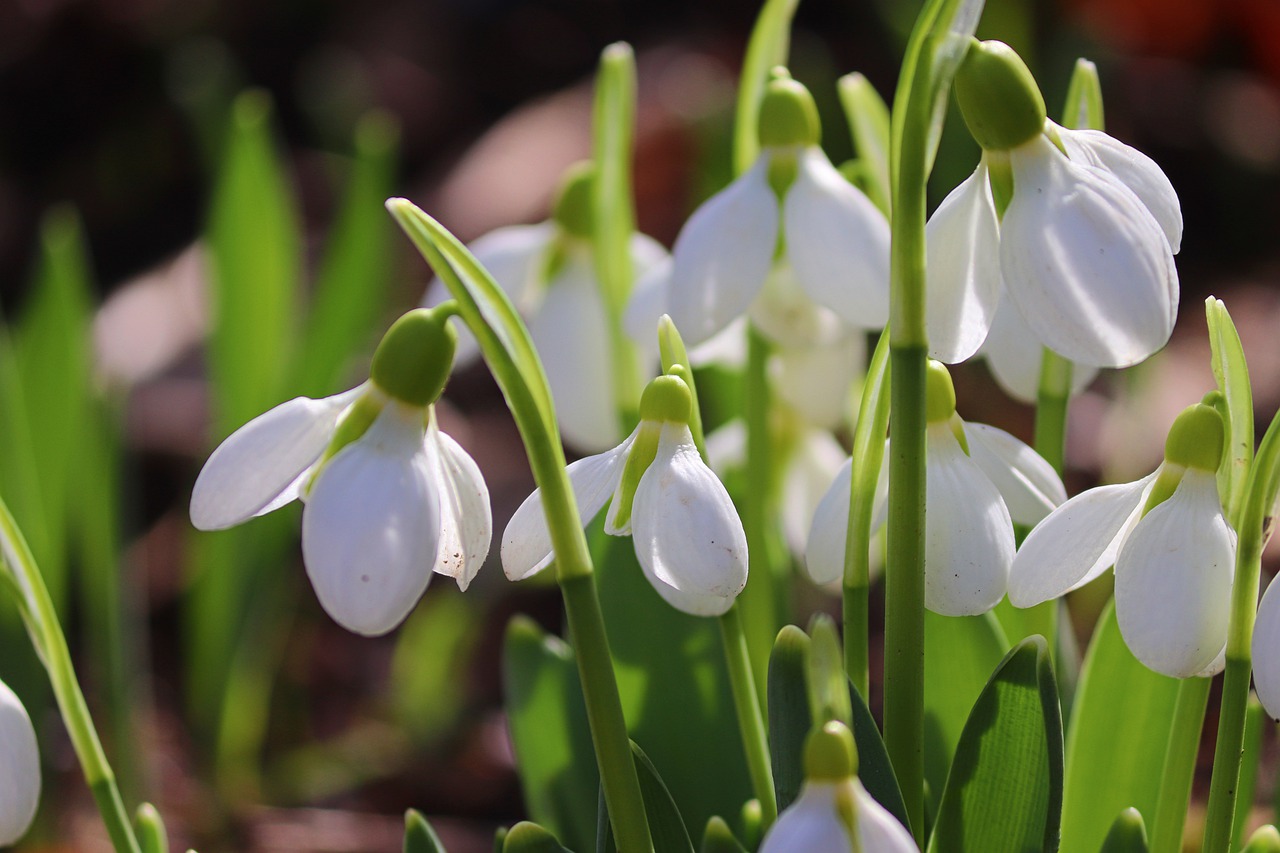Last Updated on April 8, 2024 by Real Men Sow
Snowdrops, a hardy perennial and winter-flowering flower, is often hailed as the first sign of spring. They can flower regardless of the weather, and will even grow on snowy ground.
Snowdrops are known for their tiny, bell-shaped, white flowers. However there is a wide variety of snowdrops that you can grow. Snowdrop enthusiasts will “collect” different varieties of snowdrops. These flowers come in different sizes, with different markings, color variations, and different numbers of petals. A snowdrop is just a snowdrop to an amateur gardener. But, for the expert, each one is a collector’s piece with a significant distinction.
How To Grow Snowdrops
Snowdrops can be grown in moist, well-drained soil with partial shade, and they can be planted during February or March, and as dry bulbs in October or November. These plants don’t need to be pruned, but it is a good idea to deadhead the spent blooms in order to give the bulb more energy for the next year. Every few years, you can divide and dig up congested clumps.
Where To Plant Snowdrops
In dappled shade, grow snowdrops in moist, well-drained soil that is rich in humus.
You can grow snowdrops under deciduous shrubs like Cornus alba “Sibirica” or along the borders where herbaceous plants provide ground cover. They can also be planted at the base of deciduous hedges, in grass, or in rock gardens.
Although snowdrops can be grown in pots, they will not thrive in dry soil. They will require repotting every year.
How To Plant Snowdrops
Although dry snowdrop bulbs can also be planted in autumn, they are difficult to plant. It is much easier to plant snowdrops in February to March. Take your snowdrop plants out of the ground as soon as they have finished flowering, but before their foliage turns yellow. Then, replant them elsewhere. You can purchase your own snowdrops at garden centers or online.
What Soil Should You Use For Planting Snowdrop Flowers
Snowdrops thrive in well-drained soil, in light shade and similar to their natural woodland habitat. To improve drainage, you can add some sand or gravel to your planting holes if you plant bulbs in heavy soil.
Plant your snowdrops at the same depth as they were before lifting them. Make sure to water the snowdrops thoroughly. Leave the leaves to naturally die. If conditions are dry, continue to water snowdrops.
How To Care For Snowdrop Flowers
Snowdrops can be grown once established. Let them be. To ensure that the bulbs get the nutrients they need, let the foliage die naturally. Split established clumps every few years.
What Months Do Snowdrops Flower
You can propagate Snowdrops by lifting, dividing, and replanting. After flowering in March and April, you can easily lift and divide established clumps. Use a fork to gently lift the bulb, ensuring that roots are intact and all foliage is still in place. Place the bulb in the garden immediately. Make sure to water well. Do not worry if your foliage appears a little sad. They will be strong and healthy next winter.
Problems When Growing Snowdrops
Planting new bulbs in the autumn would result in mice and squirrels digging them up because they’ll be looking for food. This is why you’ll have to make a wooden frame using chicken wire in the middle to stop squirrels eating your bulbs. To allow the bulbs to grow, place the wire frame on top of the soil. Once the bulbs begin to show signs or leaf growth, remove the wire frame.
Snowdrop Varieties To Grow
- Nivalis – The most widely grown and readily available snowdrop. For a winter display, buy clumps of 25 to 100 bulbs “in the green” for spring planting.
- Elwesii – This is the large snowdrop, also known as the ‘giant’ snowdrop that towers over all other species.
- Flore Pleno – This double-flowered snowdrop is a bold statement in small borders and pots.
- Abington Green – A strong performer that grows well. The petals on the outside are pure white and the inner petals are green.
- Woronowii – a short, compact snowdrop that stands 15 cm tall. It has small flowers and glossy dark green leaves.
- Plicatus ‘Augustus’ – It has broad leaves and slightly’seersucker-like’ outer petals. This plant is also prolific.
- Armine – This elegant snowdrop is easy to grow and has long, thin, pure white outer petals. It is taller than most varieties and has a large flower and leaf.
- Cordelia – One the Greatorex doubles that were hybridized in 1950 and 1940, it has extremely even petals, forming a neat rosette with each petal marked by an inverted “V”.
- Elwesii ‘Helen Tomlinson’ – This sturdy snowdrop has large, oblong, leaves and forms tight clumps. A mark of inverted “U” can be seen on the inner petals.
- Jade – Highly prized for its greenish-blue exterior petals and its habit of curling its stem (flower stalk) back in itself.
- Melanie Broughton – Blue-gray leaves with taller stems and beautiful rounded, almost-globose flowers. This creates splashes in pure white.
- S. Arnott – known for its glorious honeyed fragrance.
- Primrose Warburg – one of the most sought-after yellow varieties.
- Plicatus ‘Trymming’ – has green-tipped petals that curl as they age.
- Nivalis ‘Walrus’ – a double snowdrop comes from its three tusk-like outer flowers that extend in strange directions.

